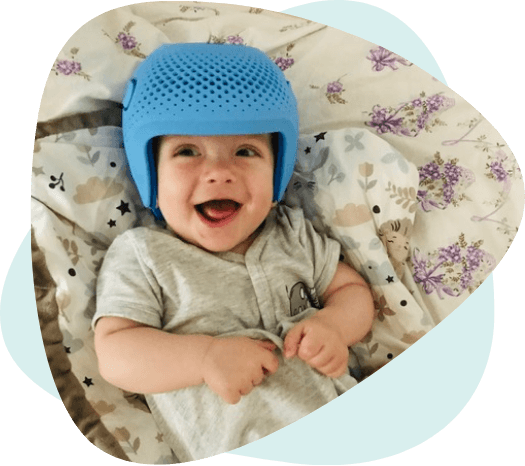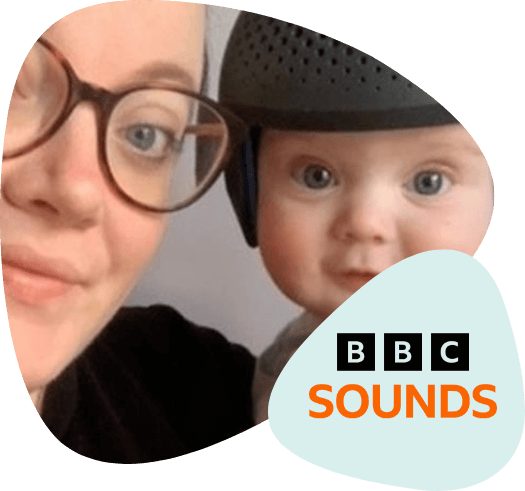Craniosynostosis
- Home >
- Craniosynostosis
What is Craniosynostosis?
Craniosynostosis is a rare condition affecting approximately 5 in 10,000 infants born in which the bones in a baby's skull fuse together too early, resulting in an abnormal head shape. The condition develops in utero before the infant is born and is usually noticed by the doctors or paediatricians in the hospital.

What are the typical symptoms?
Typical symptoms of craniosynostosis include an abnormally shaped head, an asymmetrical face, and an unusual or absent soft spot on the top of the head. Some babies may experience increased pressure on the brain, which can cause headaches, vomiting, and irritability.
The bones in the skull are connected by six flexible sutures which allow the head to compress during birth. If one of these sutures is synostosed birth could be difficult. As the baby's brain grows, it can become apparent that the head isn't growing as it should.
Depending on the affected suture, the head shape might have a pointed brow, a narrow shape with a prominent brow, facial asymmetry with one eye much more open than the other, a tall head or ear heights which are significantly different.
The involved suture(s) can usually be diagnosed without x-ray and if there is any concern, a referral to a craniofacial unit should be offered.
Why does it happen to babies?
The exact cause of craniosynostosis is not fully understood, but it is thought to be related to a combination of genetic and environmental factors.
What is the treatment for craniosynostosis?
The only treatment to release a craniosynostosis is surgery.
Traditionally surgery is made when the baby is 12 to 16 months old after the brain has completed most of its growth.
More recently minimally invasive endoscopic surgery is preferred if the infant is referred early enough. Ideally, the operation should be between the ages of 3 and 5 months using a small incision, camera and instruments. The affected suture is released, allowing the head to be reshaped using a series of custom-made helmets over the next 12 months.
Untreated craniosynostosis can lead to serious complications. It is important to seek medical attention if you suspect your baby may have craniosynostosis.
Where can I find a craniofacial specialist?
There are 5 specialist NHS centres for craniosynostosis in the UK. We have trusted partnerships with each of these NHS Foundation Trusts for referral and coordinated treatment.
Our clinicians have worked across NHS hospitals and specialist units as well as in private practice.
Technology in Motion has trusted partnerships with NHS Trusts and extensive experience coordinating treatment with the UK’s four specialised craniofacial units, including Great Ormond Street Hospital.
If you think your baby might have craniosynostosis and you are not sure what to do, get in touch, and we will help you as much as we can. Our clinicians are experts in post-operative orthotic treatment and cannot make a medical diagnosis of craniosynostosis. However, they are partnered with specialised units that can, and can point you in the right direction.
For further support and information, you may also find it helpful to visit www.headlines.org.uk.
What should I do if I think that my baby has craniosynostosis?
- If you’re unsure, then contact us and send pictures (top down, face, left and right are best).
- We’re not able to formally diagnose, but we do know the indications to look out for to tell the difference between a synostosis and a positional deformation.
- If we think that it might be a synostosis, we’ll get back to you and give you advice on how to obtain an urgent referral to one of the 5 UK craniofacial hospitals which treat this condition.
- If your baby is under 4 months of age, then your surgeon might recommend minimally invasive endoscopic surgery with additional helmet treatment which allows the head to naturally correct over the as it grows in early life.
- Whether your baby has a positional deformation, or a synostosis, we will do our best to help you.

Listen to the BBC Sounds Podcast to hear about Arthur’s journey with craniosynostosis.
Craniosynostosis is a rare condition requiring surgery and post-operative helmet therapy to support the reshaping of the skull. It is important to seek medical attention if you suspect your baby may have craniosynostosis, as untreated cases can lead to serious complications. If you are concerned your baby might have craniosynostosis and don’t know what to do, get in touch and we’ll provide all the advice we can.